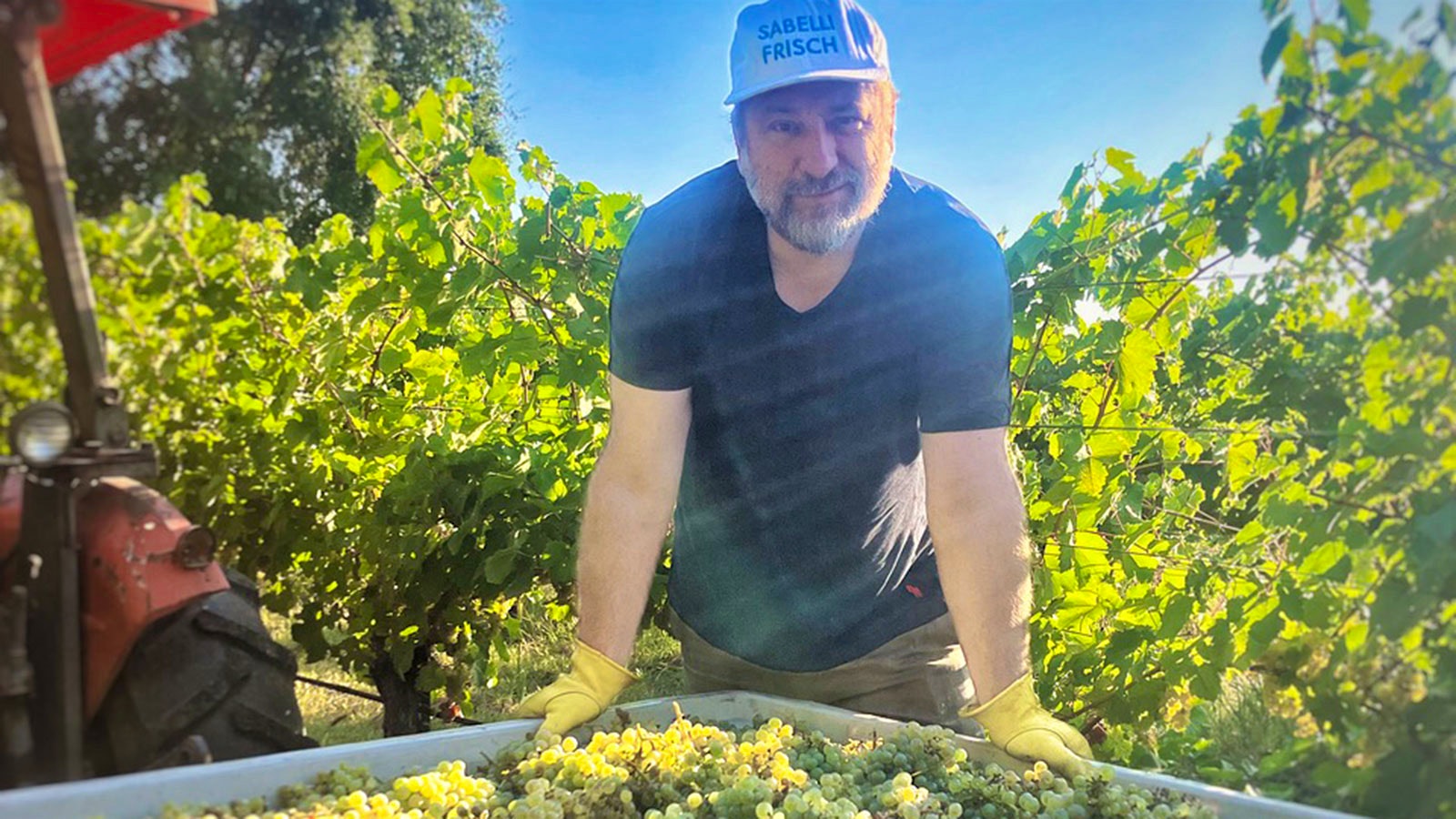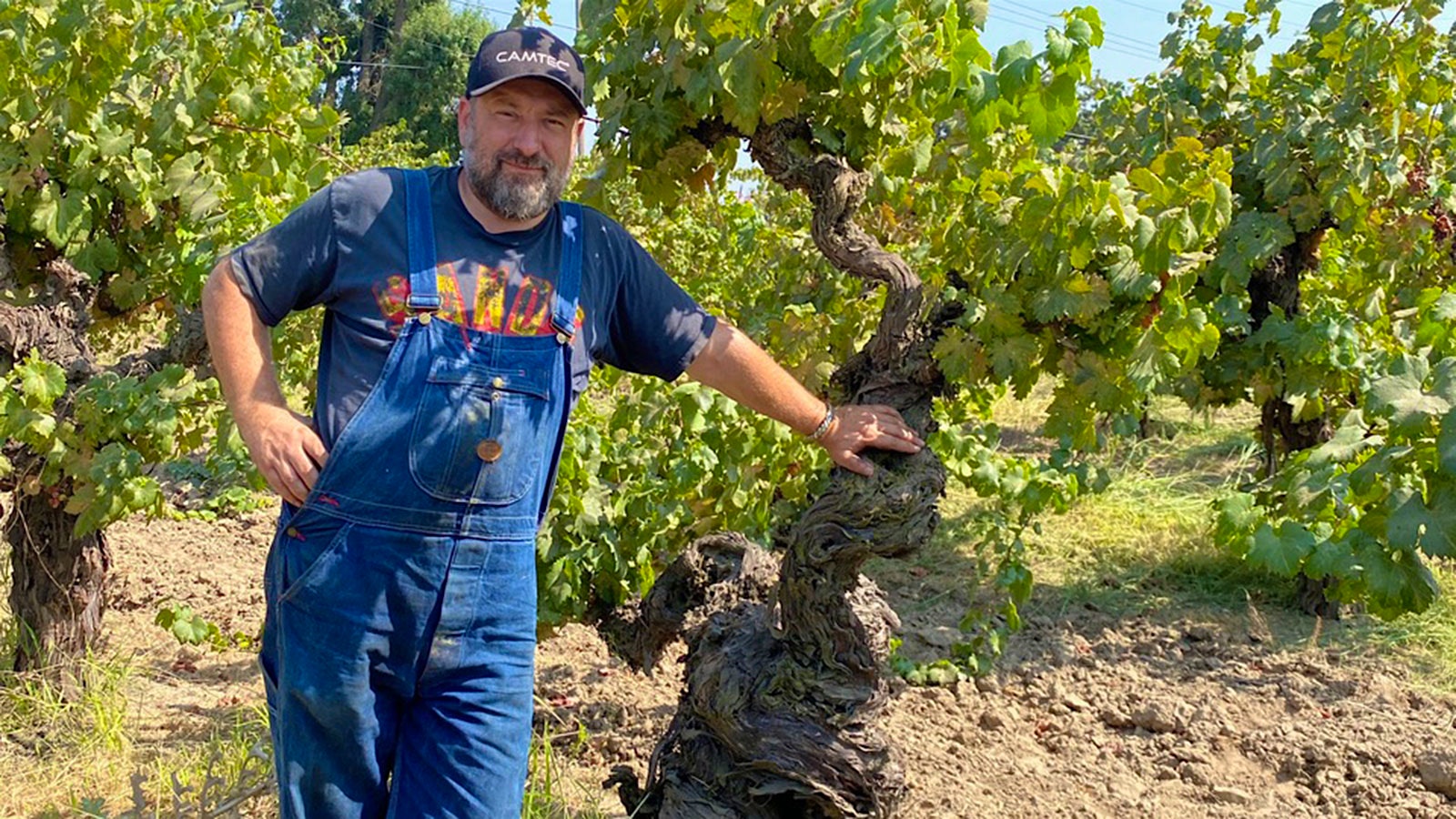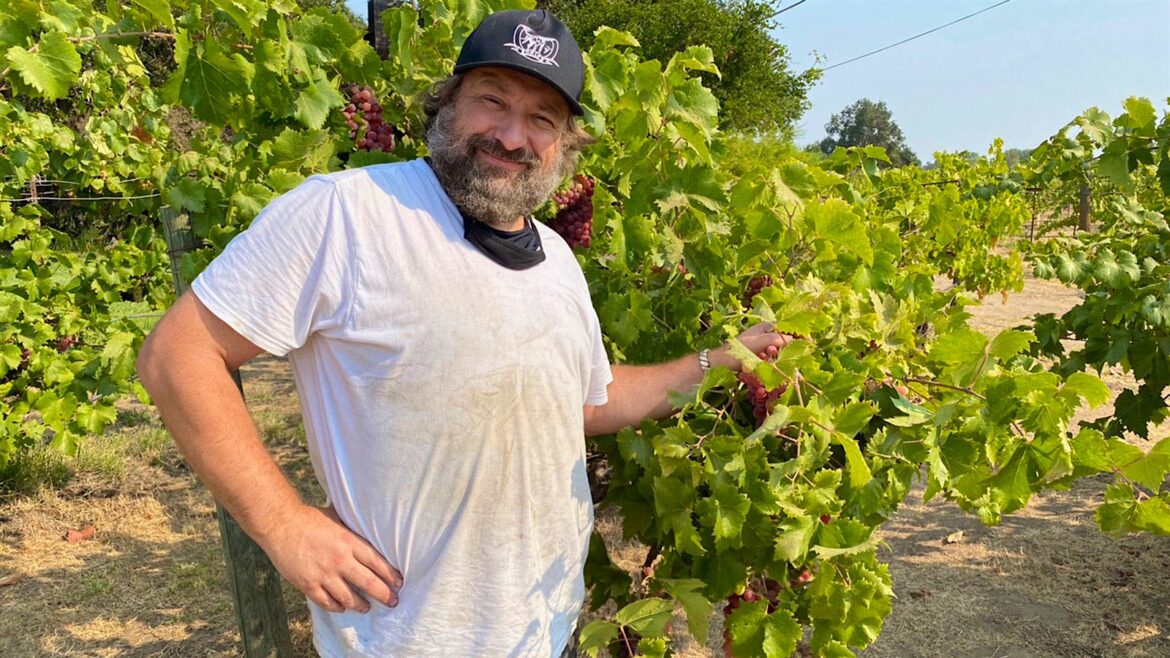Mission, Flame Tokay, Alicante Bouschet—These are some of the grapes in the personal pantheon of Adam Sabelli-Frisch. He believes in them despite the fact that they are widely unknown and unloved, even among wine connoisseurs. Many are considered relics of California’s winemaking past.
Sabelli-Frisch’s ambition is to make great wine. But he has complicated that task by adding to it another, more esoteric agenda. He wants to make great wines out of California heritage grapes, varieties that were common in the last century, but which have now fallen out of favor as tastes have changed and old vines have been ripped out.
Born in Sweden to a Swedish mother and an Italian father, Sabelli-Frisch moved to London as a young man to pursue a career as a cinematographer. Ironically, the most famous video he shot might be Amy Winehouse’s “Rehab,” a song primarily about addiction to alcohol. Moving to Hollywood, he continued to shoot commercials and music videos, but soon found himself enthralled by another California industry—winemaking.
He started making wine professionally less than a decade ago, aiming to produce low-alcohol, food-friendly wines with minimal oak. On release, the very first vintage of one of his wines, Mission Mokelumne River La Malinche 2018, made from the Mission grape, received a score of 91 points from Wine Spectator.
Today Sabelli-Frisch, 53, produces roughly 1,500 cases per year. He recently sat down with contributor Lolis Eric Elie to discuss how he decided to seek out old grapes and how he can surprise people with the wines they produce.
Wine Spectator: When did you decide to make wine commercially?
Sabelli-Frisch: The first vintage was 2018. There’s a winery in Santa Clarita and they had a supervising winemaker who kept me on track. But the decisions were mine. For the first two years I was with them and learned a lot. Finally, in 2020 I was on my own.
What were you striving for in your wines?
I thought, let’s just step back a bit. What’s the oldest European grape in America? That’s how I got onto Mission. [Also known as Listán Prieto, the grape was brought to Mexico by Spanish priests around 1540.] And that became like the calling card. It has been disrespected for a long time. It’s time for a revival. So I really kind of leaned into Mission heavily and thankfully it worked.
I had done my research. I’d gotten my hands on as much Mission wine as I could find. It’s a light-colored grape and they tended to vinify it in the light way because of the color, and it’s not necessarily the right thing for it because Mission has all those herbal kind of Campari notes. So I treated it with a little longer élevage, and I used a little bit of oak in the first years. I think I just got lucky. My instinct worked with what the grape wanted to do.

Adam Sabelli-Frisch inspects a bin of freshly harvested Riesling in the Mokelumne Glen Vineyard in Lodi. (Courtesy Sabelli-Frisch)
How do you find these forgotten grapes?
The Mission was really hard because it was completely torn out from being the most planted grape in California to being completely gone, more or less. Then one day [I saw an ad for] 80 tons of Mission. I was like “What? How have I not found this before?” [It was] the Somers vineyard in Lodi, which is kind of the only really big one left.
How did you start making Zinfandel?
When I initially started the winery I didn’t do any Zinfandel. But then I thought, “If I’m going to do California heritage varieties, what other variety is there?” Now that I have worked with the grape, it’s a real chameleon. You can really make cool wines. It’s like Syrah. You can make it in a really light style or really heavy style, and they are both good. You can’t say that about a lot of grapes.
Are most of your vineyards in Lodi?
Mainly Santa Barbara and Lodi. So my Napa Cabs, which will come out in a couple of years, that’s in Napa. I haven’t really done Sonoma so much. I would like to. Lodi is good because they have old vineyards left. Because their real estate isn’t as expensive there, they don’t tear shit out, so you get older vineyards there.
How did you choose some of the other grapes?
Flame Tokay was interesting to me because that one came to me by complete accident. My vineyard manager for the Mission just sent me a photo of a cluster of these grapes and they were all so pink and beautiful.
“I said, ‘What the hell is it?’ He said, ‘It’s like a table grape.’ And I was like, ‘No, no.’ But the color in the cluster was so beautiful. And I thought if I could make a little skin contact and I could get that color, then maybe it would be interesting, like a little special-edition wine or something like that.

These Flame Tokay vines are in the Blodgett Vineyard; the vines date to 1926 and are planted on their own roots. (Courtesy Sabelli-Frisch)
So we did four months on the skin. Technically, it’s an orange wine. When I did the Flame Tokay the first year, no one had even made wine from it in like 30 years or something. People are really interested when you tell the story. And I have a lot of customers who come back only for that. But is it going to knock Pinot Noir down? No.
I also do a little special edition each year, my Milk Fed series, one or two wines that are always a new variety or style. So I get to satisfy my own curiosity about something. I’ve done Counoise one year. This year I might get half a ton of Dornfelder, which is an Austrian inky black variety.
And Zweigelt?
I did that one year. It was really, really good. That sold out very quickly. American Zweigelt. It was fun. It was a lighter red. I love that wine.
Alicante Bouchet was fun. I was very intrigued because it is one of those few grapes that has red juice. It’s called a teinturier grape. They use it for coloring. I was really intrigued by that.
What sort of reaction have you been getting for the wines made from these unloved grapes?
I thought it would be just the younger crowd who would be into these unusual grapes. Turns out the Boomer crowd is also into that. I think they just want to satisfy their curiosity a bit. It’s not like they are going to become Mission buyers for the rest of their lives.
Consumers today don’t really care so much about the grape as much as they do about what aligns with them ethically. Organic and low-intervention wines resonate with them a bit.
Stay on top of important wine stories with Wine Spectator’s free Breaking News Alerts.


Dining and Cooking